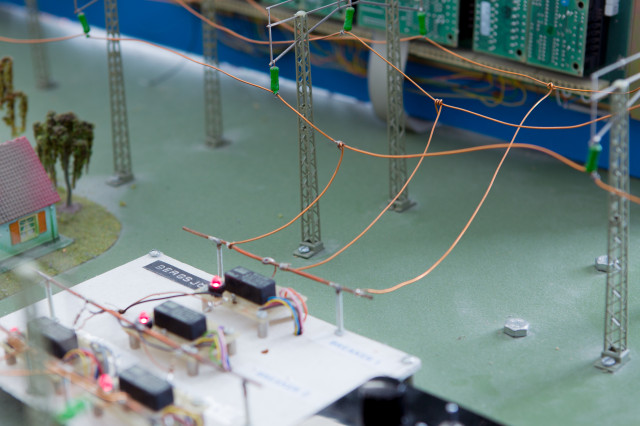• How sensors optimize ICT from a user, business and technical perspective• Personalization, dynamic Persona, logistics reduction, context measurement.• Physics of sensors. Signals, measurement techniques, noise and algorithms.• Higher level sensing, biometrics, location• Multiple sensor arrays, homogeneous and heterogeneous• Data fusion models and algorithms• Higher level fusion, aggregation• Mediated communication, sensor network topologies• Sensors and data security• Advanced applications, augmented reality and virtual spaces
II2302 Sensor Based Systems 7.5 credits
This course will be discontinued.
Last planned examination: Spring 2025
Decision to discontinue this course:
The course will be discontinued at the end of Spring 2025 according to the head of the school's decision: J-2023-3202.
Decision date: 2023-12-08
The course was given for the last time in Spring 2022. The last opportunity for examination in the course is given in Spring 2025.
The exam is offered during the re-examination period in June. Contact the examiner to be examined on the project.

Information per course offering
Course offerings are missing for current or upcoming semesters.
Course syllabus as PDF
Please note: all information from the Course syllabus is available on this page in an accessible format.
Course syllabus II2302 (Autumn 2023–)Content and learning outcomes
Course contents
Intended learning outcomes
This course is an introduction to sensor enabled systems, with an emphasis on embedded platforms. Areas covered include broad sensor technologies, the physical properties they measure, and how they are used in embedded designs. Data fusion methods and algorithms, especially for heterogeneous sensor networks and systems are discussed, and how these methods enable new applications and services, especially those in context awareness. The roles of mediated communications, connectivity and network topology choices in sensor networks are also covered. Technologies and methods discussed in the class will be tied to emerging application areas in several areas such as machine intelligence, security, entertainment, and business processes. • To know how to select sensors based on physical measurement requirements and application specifications.• To know how to deploy data fusion principles to combine sensor data to satisfy a measurement goal.• To know how security can be protected with respect to sensors and the data they generate. Also to know the limitation of security methods used with respect to robustness, computation requirements and cost.• To know how to design a network topology for communicating sensor nodes that satisfies stated requirements of robustness, security, performance and cost.• To be able to use sensor based architectures to design advanced applications that use context awareness, personalization, augmented and virtual spaces.
Literature and preparations
Specific prerequisites
Literature
Examination and completion
If the course is discontinued, students may request to be examined during the following two academic years.
Grading scale
Examination
- PRO1 - Project, 4.5 credits, grading scale: A, B, C, D, E, FX, F
- TEN1 - Examination, 3.0 credits, grading scale: A, B, C, D, E, FX, F
Based on recommendation from KTH’s coordinator for disabilities, the examiner will decide how to adapt an examination for students with documented disability.
The examiner may apply another examination format when re-examining individual students.
Passed written exam TEN1: 3 hp, Grade A-FProject PRO1: 4,5 hp, Grade A-FThe grade for the course is calculated as a weighted average where the grade E-A are given a value of 1-5. Roundhalfs up.
Examiner
Ethical approach
- All members of a group are responsible for the group's work.
- In any assessment, every student shall honestly disclose any help received and sources used.
- In an oral assessment, every student shall be able to present and answer questions about the entire assignment and solution.